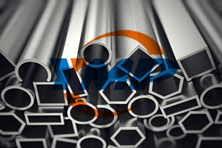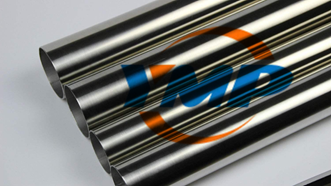As we all know, corrosion-resistant metals are widely used in various industries, such as the cooking and catering industry in daily life, the aerospace field that requires high precision and high corrosion resistance for the materials used, or the cnc machining industry with a wide range of applications. Corrosion-resistant metals provide greater structural strength and heat resistance than common metals. This article will provide basic information on corrosion resistant metals.

A-Stainless steel
What we call "stainless steel" in daily life does not refer to a specific metal, but an umbrella term that includes many corrosion-resistant metals. The degree of corrosion resistance depends on the elemental composition of the alloy. Specific chemical resistance also varies with the chemical nature of the metal. The key to corrosion resistance of stainless steel is to form a chromium oxide passivation layer on the surface, thereby providing good corrosion resistance.
According to the microstructure and element composition of stainless steel, stainless steel materials are divided into three categories:
1-Austenitic stainless steel (Austenitic stainless steel) This series of alloys is usually called 300 series stainless steel. The well-known SUS304 and SUS316 are this series of stainless steel. Among them, 316 stainless steel is the most corrosion-resistant and the most expensive. Austenitic stainless steels are the most common corrosion-resistant metals on the market.
2-Martensitic stainless steel: The common grade in this family is usually 420A, which has 18% chromium and no nickel, but has a higher carbon content and is harder than other corrosion-resistant metals in the stainless steel family. But martensitic stainless steels are not as corrosion resistant as austenitic stainless steels.
3-Ferritic Stainless Steel: This alloy is also part of the 400 series of stainless steels. The most common is 430A. Ferritic stainless steels have a much higher chromium content, lower carbon content than other stainless steels and are more ductile;
4-Duplex stainless steel, duplex steel refers to stainless steel in which ferrite and austenite each account for about 50%. Generally, the content of less phases needs to reach at least 30% of stainless steel. In the case of low carbon content, the chromium (Cr) element content is 18%-28%, and the nickel (Ni) content is 3%-10%. Some duplex stainless steels also contain alloying elements such as molybdenum (Mo), copper (Cu), niobium (Nb), titanium (Ti), and nitrogen (N).

B-Superalloy
Superalloy refers to a kind of metal material based on iron (Fe), nickel (Ni) and cobalt (Co), which can work for a long time at a high temperature above 600 °C and under a certain stress. It also has excellent high temperature resistance and good Excellent oxidation resistance and thermal corrosion resistance, good fatigue performance and fracture toughness and other comprehensive properties, also known as "super alloys," are mainly used in aerospace and energy fields.
At present, several superalloys commonly used in the market include nickel superalloy, cobalt superalloy, and iron superalloy.
Nickel superalloy: This is a superalloy with nickel as the matrix (generally more than 50%) in the range of 650-1000 ℃ with high strength and good resistance to oxidation and gas corrosion. It can be used for heat, Cold deformation processing, working temperature range -253~1320°C, a type of alloy with good mechanical properties, comprehensive strength and toughness indicators, and high oxidation resistance and corrosion resistance. According to its heat treatment process, it can be divided into solid solution strengthening alloy and aging strengthening alloy.
Cobalt-based superalloy: It is an austenitic superalloy containing 40-65% cobalt. It has certain high temperature strength, good thermal corrosion resistance and oxidation resistance under the condition of 730-1100 °C. It is suitable for making guide vanes and nozzle guide vanes of aviation jet engines, industrial gas turbines, ship gas turbines and diesel engine nozzles.
Iron superalloy: This superalloy has high strength and high corrosion resistance at room temperature compared to nickel and cobalt superalloys. Much cheaper than the other two types of superalloys.
C-Aluminum material
Aluminum has good corrosion resistance and forms a passivating oxide layer on its surface, which makes it resistant to corrosion. Most grades of aluminum have strong chemical elasticity, but 1xxx series (industrial pure aluminum, that is, the aluminum with the highest aluminum content) 3xxx series (aluminum-manganese alloy aluminum plate, commonly known as anti-rust aluminum plate, with manganese as the main Alloying elements) 5xxx series (aluminum-magnesium alloy aluminum plate, with magnesium as the main alloying element, has good processing and forming performance, corrosion resistance and welding performance)
D-Copper alloy
Copper alloys possess good corrosion resistance and are often included in other metal alloys to increase overall corrosion resistance. Some of the most common corrosion-resistant metals in the copper alloy family are listed below.
Bronze: The main element of the bronze alloy is tin, which is especially suitable for use in seawater and oceans. When a small amount of silicon is added to the bronze alloy, the corrosion resistance performance is significantly improved;
Brass: Brass is a copper-zinc alloy that is very common. Adding a small amount of tin to the alloy will also improve the overall corrosion resistance of the alloy, and an increase in zinc content will reduce the corrosion resistance to a certain extent. Brass also has a lower melting point than pure copper or bronze;
E-Titanium alloy
Titanium alloys are widely used in the aerospace industry due to their strength-to-weight ratio, while their corrosion resistance also makes titanium alloys ideal for certain industrial scenarios. Like other metals, the corrosion resistance of titanium alloys comes from the passivating oxide layer formed on the surface. Even if this oxide layer is peeled off, it can quickly form again in the presence of oxygen and moisture. Titanium alloy has unique resistance in chlorine solution, so in the chlor-alkali industry, titanium alloy is a widely used corrosion-resistant metal.
When selecting a corrosion-resistant metal, it is advisable to first review the corresponding chemical compatibility chart. This helps to narrow down the options to those that are a better fit for your particular conditions. You can contact Shenzhen YiXin Precision Metal And Plastic Ltd. to know which chemical substance is suitable for your use scenario.